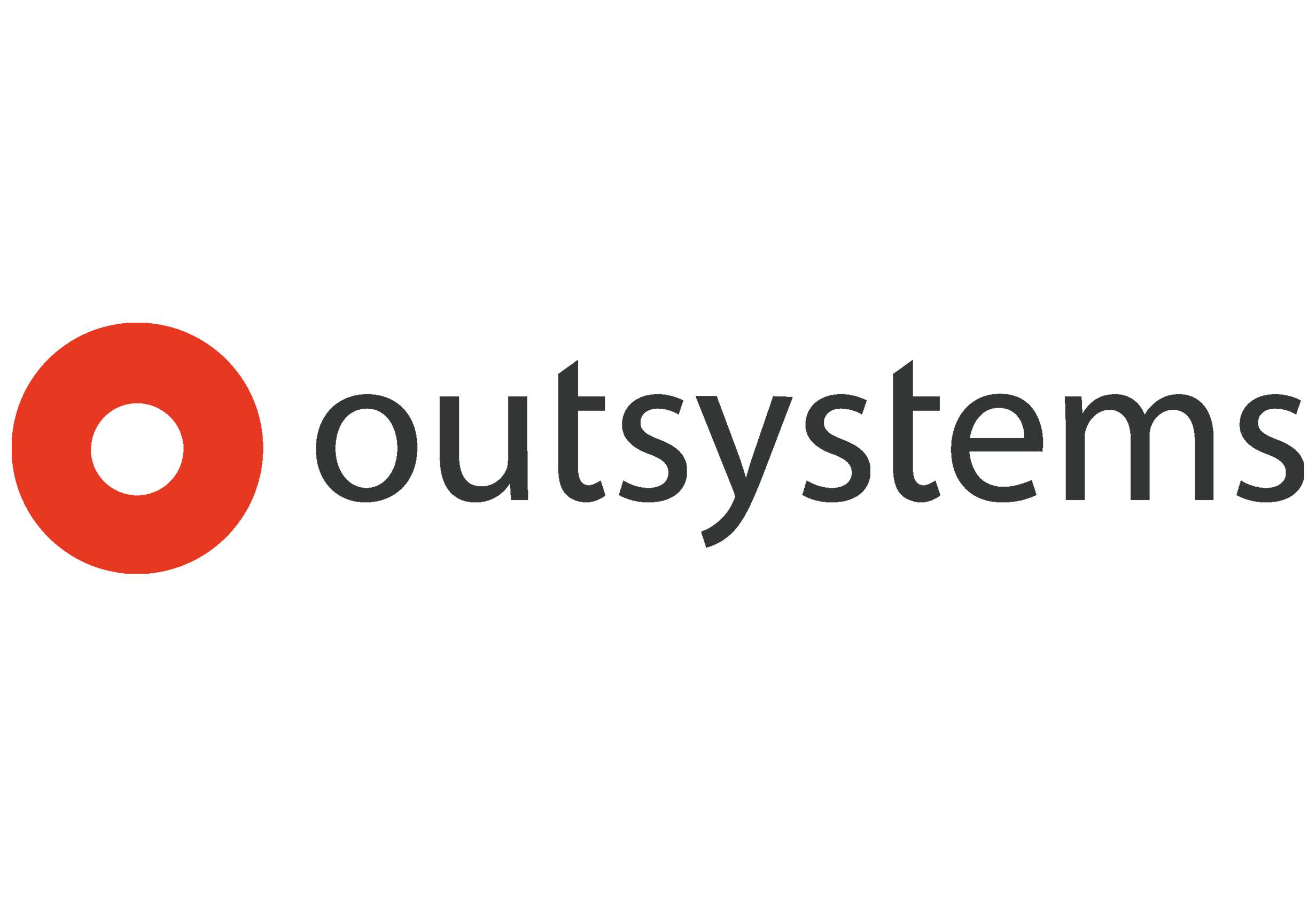นักพัฒนาราว 58 เปอร์เซ็นต์ระบุว่าการบูรณาการระบบรักษาความปลอดภัยและการพัฒนาแอปพลิเคชั่น คือความท้าทายที่สำคัญสำหรับการประยุกต์ใช้งานแพลตฟอร์มการพัฒนาแบบ Low-code
ประเทศไทย – 25 พฤศจิกายน 2563 – เอาท์ซิสเต็มส์ (OutSystems) ผู้นำระดับโลกด้านแพลตฟอร์มโมเดิร์นแอปพลิเคชั่น รวมถึงแพลตฟอร์มการพัฒนาแบบ Low-code เปิดเผยผลการศึกษา InfoBrief ซึ่งจัดทำโดยไอดีซี (IDC) บริษัทชั้นนำด้านการวิจัยตลาดและการให้คำปรึกษาด้านไอที ผลการสำรวจเกี่ยวกับซอฟต์แวร์ในเอเชีย-แปซิฟิกประจำปี 2563: DevOps, DevSecOps และอนาคตของนวัตกรรมดิจิทัล (Asia/Pacific 2020 Software Survey: DevOps, DevSecOps, and the Future of Digital Innovation) ซึ่งได้รับการสนับสนุนโดยเอาท์ซิสเต็มส์ เจาะลึกรายละเอียดเกี่ยวกับแนวทางการดำเนินการขององค์กรต่าง ๆ ในเอเชีย-แปซิฟิกสำหรับการปรับเปลี่ยนองค์กรให้กลายเป็นศูนย์พัฒนาด้านนวัตกรรมดิจิทัล เพื่อให้ประสบความสำเร็จในสภาพแวดล้อมของธุรกิจในปัจจุบัน ผลการสำรวจดังกล่าวระบุว่า 39 เปอร์เซ็นต์ของผู้บริหารฝ่ายไอทีในเอเชีย-แปซิฟิก มีการพึ่งพาเครื่องมือสำหรับพัฒนาแอปพลิเคชั่นโดยมีภาพและกราฟฟิกในการพัฒนา (Visually-guided Development tools) ทั้งนี้มีเหตุผลสำคัญที่สุด 3 ข้อคือ ผู้บริหารเชื่อว่าในอนาคตเครื่องมือพัฒนาดังกล่าวจะได้รับความนิยมอย่างแพร่หลาย ทั้งยังช่วยให้นักพัฒนาทำงานได้ง่ายขึ้น และรองรับการใช้งานหลากหลายและสะดวกง่ายดาย นอกจากนี้ ผู้บริหารในเอเชีย-แปซิฟิกกว่าครึ่ง มั่นใจว่าองค์กรของตนจะใช้งานแพลตฟอร์มการพัฒนาแอปพลิเคชั่นที่ไม่ต้องเขียนโค้ดเองมากนัก หรือแพลตฟอร์ม Low-code อย่างน้อยหนึ่งในสี่ของโครงการทั้งหมดที่วางแผนไว้ โดยคาดว่าเครื่องมือแบบ Low-codeจะได้รับการใช้งานอย่างกว้างขวางในช่วงปี 2564
มาร์ค วีเซอร์ รองประธานประจำภูมิภาคเอเชีย-แปซิฟิกของเอาท์ซิสเต็มส์ กล่าวว่า “ปัจจุบัน ภูมิภาคเอเชีย-แปซิฟิกมีการเติบโตอย่างรวดเร็ว และคาดว่าจะขยายตัวอย่างต่อเนื่องและกลายเป็นศูนย์กลางที่ขับเคลื่อนระบบข้อมูลอย่างมีประสิทธิภาพภายในปี 2567 ด้วยเหตุนี้ องค์กรต่าง ๆ ในภูมิภาคนี้จึงหันมาใช้เครื่องมือพัฒนาแบบ Visual กันมากขึ้นเพื่อรองรับการสร้างแอปพลิเคชั่นแบบคลาวด์เนทีฟ (Cloud-native) เอาท์ซิสเต็มส์มีความพร้อมในการตอบโจทย์ความต้องการขององค์กรธุรกิจ ด้วยการจัดหาเทคโนโลยีคลาวด์และ Low-code เพื่อเสริมศักยภาพให้แก่ภูมิภาคเอเชีย-แปซิฟิกสำหรับการเป็นศูนย์กลางขับเคลื่อนระบบข้อมูลดิจิทัลในอนาคตอันใกล้”
ทันกระแสการใช้เทคโนโลยี
ขณะที่ภูมิภาคเอเชียตะวันออกเฉียงใต้เติบโตอย่างรวดเร็วและมีศักยภาพที่จะกลายเป็นศูนย์กลางข้อมูลในอนาคต แต่บางองค์กรยังคงประสบปัญหาในการปรับใช้แนวทางและกระบวนการ DevOps ที่คล่องตัวสำหรับขั้นตอนต่าง ๆ ในการพัฒนาซอฟต์แวร์ สถานการณ์การแพร่ระบาดของโควิด-19 และการทำดิจิทัลทรานส์ฟอร์เมชั่น (Digital Transformation) ขององค์กรต่าง ๆ ที่เกิดขึ้นอย่างกว้างขวาง ส่งผลให้มีการพัฒนาบริการดิจิทัลอย่างรวดเร็วมากยิ่งขึ้น ตลาดโมบายล์คอนเทนต์ของไทยและนักพัฒนาแอปมีบทบาทสำคัญสำหรับการพัฒนาในส่วนนี้ การเติบโตอย่างต่อเนื่องของคอนเท้นต์บนสมาร์ทโฟนในไทย ส่งผลให้มีตำแหน่งงานเพิ่มขึ้นกว่า 20,000 อัตราในส่วนของนักพัฒนา และนับเป็นสัญญาณที่ดีสำหรับอนาคตของอุตสาหกรรมดังกล่าว ปัจจุบันมีผู้เผยแพร่แอปของไทยกว่า 2,000 รายบน Google Play จากทั้งหมด 912,372 รายทั่วโลก ด้วยเหตุนี้ การบูรณาการและการจัดการซอฟต์แวร์โอเพ่นซอร์สจึงกลายเป็นภารกิจสำคัญด้านการพัฒนาสำหรับองค์กรต่าง ๆ ในภูมิภาคนี้ ทั้งนี้ในตลาดโมบายล์คอนเทนต์ของไทย นักพัฒนาแอปยังคงมีบทบาท
ปัญหาท้าทายที่สำคัญ
ในปัจจุบัน 29 เปอร์เซ็นต์ขององค์กรในเอเชียตะวันออกเฉียงใต้มีแผนที่จะปรับใช้เครื่องมือพัฒนาแบบ Visual ในช่วง 18 เดือนข้างหน้า โดยประเด็นที่น่าสนใจก็คือ ความท้าทายสำคัญสำหรับเอเชียตะวันออกเฉียงใต้แตกต่างอย่างมากจากประเทศเพื่อนบ้านในเอเชีย-แปซิฟิก โดยเรื่องความปลอดภัยและการบูรณาการเครื่องมือสำหรับการพัฒนาถือเป็นความท้าทายสำคัญที่สุด (58 เปอร์เซ็นต์) รองลงมาคือเรื่องการจัดตั้งทีมงานที่มีความรู้ความเชี่ยวชาญที่มีหลากหลาย (48 เปอร์เซ็นต์) และการโน้มน้าวให้ผู้บริหารตระหนักถึงคุณค่าของ DevOps (47 เปอร์เซ็นต์)
มาร์ค วีเซอร์ กล่าวเพิ่มเติมว่า “จากการพูดคุยกับนักพัฒนาจำนวนมากในเอเชียตะวันออกเฉียงใต้ เอาท์ซิสเต็มส์ได้ตระหนักถึงความกังวลใจที่เพิ่มมากขึ้นเกี่ยวกับระบบรักษาความปลอดภัยที่รวมอยู่ภายใน โดยเฉพาะอย่างยิ่งในปัจจุบันซึ่งมีกรณีการโจรกรรมข้อมูลเกิดขึ้นอย่างกว้างขวางหลายต่อหลายครั้ง ด้วยเหตุนี้ เอาท์ซิสเต็มส์จึงนำเสนอฟังก์ชั่นด้านความปลอดภัยที่หลากหลาย ครอบคลุมทั้งในส่วนของความปลอดภัยสำหรับแอปพลิเคชั่น, โครงสร้างพื้นฐาน Virtual Private Cloud (VPC) และทีมงานฝ่ายรับมือภัยฉุกเฉินที่พร้อมให้บริการตลอดเวลา แม้ว่าเอาท์ซิสเต็มส์จะมุ่งเน้นเรื่องการเพิ่มความรวดเร็วในการพัฒนาแอปพลิเคชั่น แต่เราเชื่อว่าการทำงานที่รวดเร็วไม่จำเป็นต้องแลกกับความปลอดภัย ด้วยเหตุนี้เราจึงจัดสรรสภาวะแวดล้อมที่ปลอดภัยให้แก่ลูกค้า รวมไปถึงเครื่องมือที่จำเป็นสำหรับการพัฒนาแอปอย่างปลอดภัย”
ความคล่องตัวหลังการแพร่ระบาดของโควิด-19
ในเรื่องของการรักษาความปลอดภัยภายหลังสถานการณ์โควิด-19 ไอดีซีคาดว่ากระบวนการพัฒนาซอฟต์แวร์จะสั้นลงเรื่อย ๆ และองค์กรต่าง ๆ จะต้องให้ความสำคัญกับเรื่องของการบูรณาการด้านความปลอดภัยเข้าไว้ในขั้นตอนการวางแผน เพื่อรับมือกับสถานการณ์ที่อาจเกิดขึ้น นอกจากนี้ องค์กรจำเป็นที่จะต้องนำเสนอประสบการณ์ที่แปลกใหม่เพื่อตอบสนองความคาดหวังที่สูงขึ้นของลูกค้า และรองรับการสร้างตลาดและการเข้าถึงกลุ่มลูกค้าใหม่ ๆ รวมไปถึงการจัดการความเสี่ยง การวิเคราะห์ข้อมูล และการรับฟังความคิดเห็นของลูกค้าอย่างต่อเนื่องเพื่อใช้ในการสร้างสรรค์แนวคิดบนแพลตฟอร์มใหม่ ๆ องค์กรในเอเชียตะวันออกเฉียงใต้ 27 เปอร์เซ็นต์ระบุว่าการสรรหาบุคลากรคือภารกิจสำคัญที่สุด โดยหลาย ๆ องค์กรประสบปัญหาต่าง ๆ เช่น การเลิกจ้างบุคลากรในตำแหน่งงานที่ไม่จำเป็น การขาดแคลนบุคลากร และกฎระเบียบที่เข้มงวดมากขึ้น ด้วยเหตุนี้ บริษัทต่าง ๆ จึงควรเริ่มต้นวางแผนเรื่องการสรรหาบุคลากรแต่เนิ่น ๆ ก่อนที่จะถึงคราวจำเป็นที่จะต้องหาคนมาทำงานในตำแหน่งนั้น ๆ ที่จริงแล้ว การสร้างแอปจะช่วยเพิ่มพูนทักษะและส่งเสริมการเรียนรู้อย่างต่อเนื่อง และการเปิดโอกาสให้บุคลากรในฝ่ายพัฒนาธุรกิจได้ทำงานร่วมกับฝ่ายไอทีจะช่วยแก้ปัญหาขาดแคลนบุคลากรด้านการพัฒนาได้อีกทางหนึ่ง
